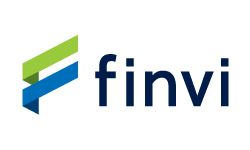Source: site
Four of the 15 largest Wisconsin-based financial institutions take in more than $1 million every month in overdraft and NSF consumer fees.
Show Caption
Hide Caption
Here’s how to get your views published in Milwaukee Journal Sentinel
Want to share a view on an issue of the day? Or comment on how our community or state could be improved? Here’s how to get your opinion published.
- A Consumer Financial Protection Bureau rule to cap overdraft fees was overturned by Congress.
- Overdraft fees can range from $25 to $35 and disproportionately affect struggling consumers.
- Some financial institutions in Wisconsin collect over $1 million per month in overdraft and NSF fees.
- The author encourages consumers to review a bank’s specific fees and practices, such as daily fee caps.
As a CEO of a consumer-focused financial institution, I have witnessed firsthand the financial strain that overdraft fees place on consumers, particularly those who are already struggling to make ends meet. Overdraft fees, which can range from $25 to $35 for even minor shortfalls, create significant financial stress for individuals and families. These fees are often charged multiple times in a single day, snowballing an account deficit into fees that can wipe out a full day’s wages.
On October 5, a Consumer Financial Protection Bureau rule was set to cap overdraft fees at $5 for the largest financial institutions. The goal was simple: to make overdraft protection fair and affordable. Instead, after hearing from the financial services industry, Congress decided to overturn it before it could take effect.
Many overdraft fees exploit the desperate need of working families for short-term credit. Unfortunately, while overdraft fees are a more convenient way to get short term credit, they are often the costliest option. In many cases, the overdraft fees exceed the amount borrowed.
Some Wisconsin banks and credit unions collect millions in overdraft fees
The biggest banks have taken a lot of heat on this issue, but, sadly, they are not alone. According to 2024 quarterly regulatory data, four of the 15 largest Wisconsin-based financial institutions (banks and credit unions) take in more than $1 million every month in overdraft and non-sufficient funds consumer fees. Alternatively, nearly half of those top institutions (including UW Credit Union) collect less than $85,000 per month.
Some might dismiss these disparities as just a function of scale, rather than principle. That very well might be true for select institutions, especially those that have implemented reforms in the past few years. Others would argue that an institution that serves more economically disadvantaged people would have more overdraft income. When trying to explain such big differences in each institution’s overdraft income, a third explanation is even easier to understand: the actual fees and practices that drive what consumers pay.
I encourage consumers to review the fees and practices of each institution, as they are disclosed to consumers at account opening. Elements that correlate with high levels of overdraft income include:
- High overdraft/non-sufficient funds fees, in the range of $25 or more per item. These fees are typically many multiples of the actual cost to provide the service.
- No cap on the number of fees a consumer can trigger per day. At some institutions, if a consumer makes three $15 debit card purchases, they might pay $90 in fees to get the $45 dollar advance. Capping the quantity of fees to one per day is the best consumer practice.
- No grace zone for small overdraft. Some institutions charge $25 or more even if you overdraw your account by one cent.
- Charging overdraft fees on debit card transactions. Unlike covering electronic withdrawals (like the rent), and checks (like mortgage payments), it’s easy to lose track of your balance using debit cards. Some institutions authorize the transaction even when there are no funds available to cover it.
The amount of the fees, and the practices that make it likely to repeatedly trigger them, are the key drivers of overdraft income. Comparing an institution’s overdraft and non-sufficient funds fees income expressed as a percent of asset size, fee income as a percent of the size of the customer base, or fee income as a percent of annual operating net income tells part of the story.
The straightforward examination of the fees and practices is the fastest path to understanding the whole story, and that information is available even when the aggregate numbers are withheld from consumers.
Federal government has rolled back protections for consumers
In 2022 I provided congressional testimony at the hearing, “Examining the Movement to Eliminate the Fees Costing Consumers Billions.” Since then, I continue to advocate for transparency — in collecting and publishing these fees and practices — to help yield better options for consumers.
While some states and even some federal regulators have taken steps in that direction, federal actions have since been rolled back. In 2024, we had a clear view into overdraft and non-sufficient funds income of Wisconsin banks and credit unions when the National Credit Union Administration briefly required regulatory disclosure of fee income for institutions with more than $1 billion in assets.
Currently, overdraft reform efforts to improve transparency are stalled in Washington. But really, with all the research, congressional hearings, and industry forums that make clear the harm these fees are doing to working families, do our financial institution leaders really need any more evidence to prompt change?
Instead of reining in overdraft fees at the federal level, we saw a lost opportunity to give consumers a much-needed break. With rising housing, food, and healthcare costs, the question is, how much longer can our Wisconsin neighbors wait?
Paul Kundert is president of the UW Credit Union and has been an advocate for fairness in financial service through his industry and public service work.




